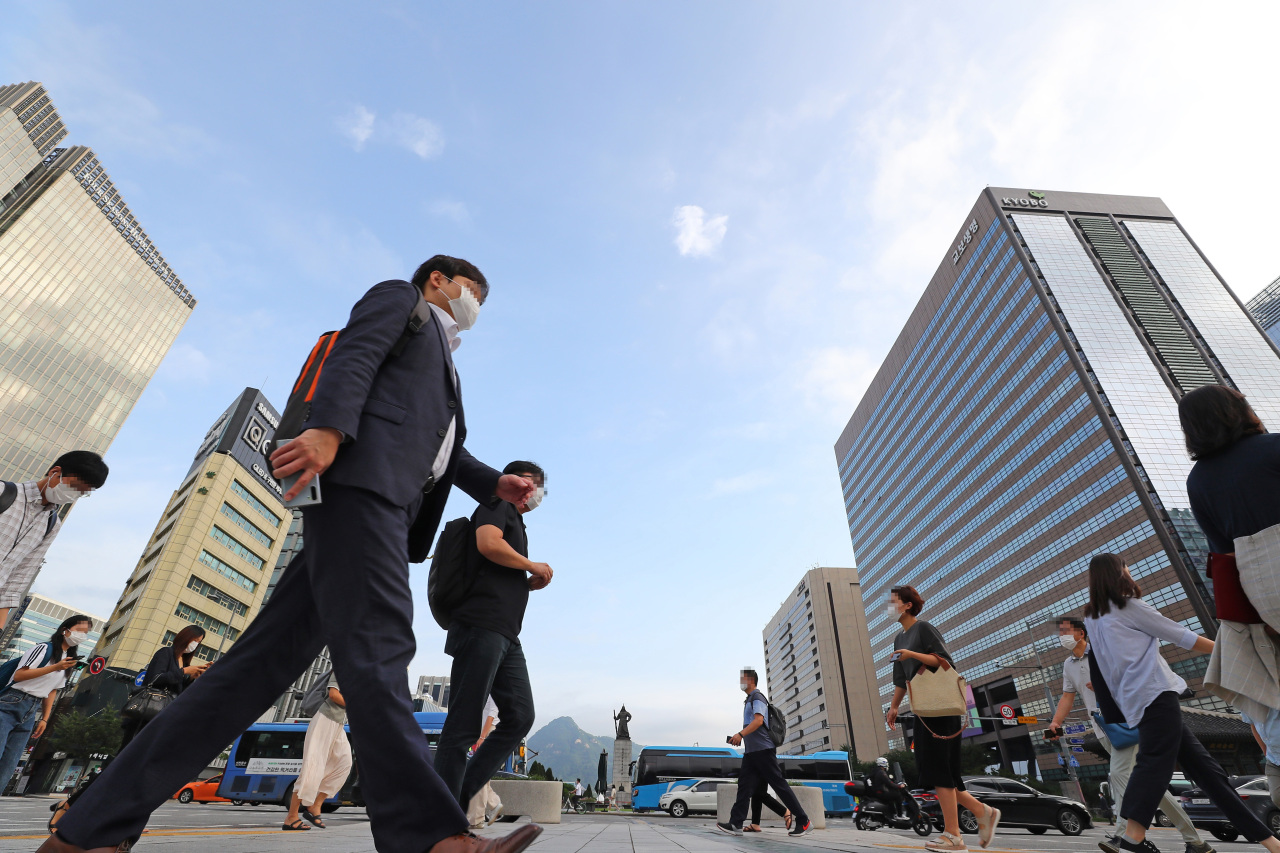South Korea’s potential growth on downhill for decades
 |
|
Pedestrians cross a road in Gwanghwamun Square (Yonhap)
|
South Korea’s potential growth rate has declined for decades, reflecting the nation’s aging society, slowing capital accumulation and changing job market, a think tank report showed Wednesday.
Asia’s fourth-largest economy’s potential growth rate – gross domestic product per person aged 15 and over – by decade came to an average 2.1 percent in the 2010s, compared with 7.6 percent in the 1980s, according to the Korea Economic Research Institute. The figure has been gradually falling, with 5.3 percent in the 1990s and 3.8 percent in the 2000s.
A potential growth is the rate of economic expansion a country can sustain over the medium term without excess inflation. It has overall declined in advanced economies in recent decades.
The think tank took total factor productivity, capital accumulation, labor hours and employment per decade into account when calculating the growth rates. As a result, all areas expect employment rate have been declining in recent decades.
Total factor productivity or TFT a measure of productive efficiency by measuring the size of output from “unseen” inputs including labor, capital and regulations fell to 2.9 percent in the 2010s from 6.4 percent in the 1980s. The figure stood at 4.2 percent in the 1990s and 4.1 percent in the 2000s.
Capital accumulation reached its peak at 2.1 percent in the 1990s from 0.7 percent in the 1980s, then sharply fell to 0.3 percent in the 2000s. It stood flat at 0 percent in the 2010s.
Average labor hours came to minus 1.2 percent in the 2010s, compared with 0.1 percent in the 1980s. It stood at 0.8 percent and 0.9 percent in the 1990s and 2000s, respectively.
Meanwhile, the employment rate has steadily hovered around 0.4 percent in the cited decades, KERI said.
The think tank voiced concerns that the slowing pace of the potential growth could eventually pull the economy down into negative growth, if the issues remain unresolved. The changing labor market affected by the nation’s declining birthrate and the aging population trend is likely to further drag down the growth potential, it added.
The nation has been slowly morphing into an aged society. The number of senior citizens, or people aged 65 and older, came to 8.21 million as of November last year, data from Statistics Korea showed, accounting for 16.4 percent of the total population. The economy is projected to become a super-aged society in 2025, when those aged 65 and older account for 20 percent of the population.
The total fertility rate the average number of children a woman bears in her lifetime hit a new record low of 0.84 last year, same data showed. It marked the third straight year that the rate was below 1 percent.
Overall, South Korea’s total population grew slightly in the cited period, as more Koreans living overseas returned home due to the global COVID-19 pandemic. A total of 51.83 million people lived in South Korea as of Nov. 1, 2020, up 0.1 percent or 50,000 on-year.
“Since there is a limit to supply in labor and capital, Korea must boost its total factor productivity to nurture its growth potential,” said Choo Kwang-ho, the head of KERI‘s economy policy division.
“In order to achieve that, an overhaul of the strict business regulations, tax benefits and support for more research and development must be implemented,” Choo added.
By Jung Min-kyung